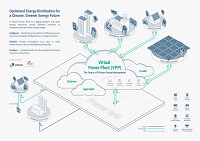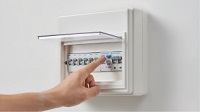- About EMA
- Our Energy Story
- Consumer Information
- Regulations & Licences
- News & Events
- Partnerships
About EMA
Who We Are
Learn about EMA’s leadership, milestones and accomplishments.
Join Us
Explore the career, scholarship and internship opportunities available in EMA.
Our Energy Story
Overview
Learn how the Singapore Energy Story charts the path to a net-zero future.
Energy Supply
Gain insights into the Four Switches powering Singapore towards a cleaner energy future.
Energy Demand
Discover ways to enhance energy efficiency and lower your carbon footprint.
Energy Grid
Explore how EMA ensures a reliable and secure energy supply for everyone.
Energy Market Landscape
Learn about the intricacies of Singapore’s energy market structure and operations.
Consumer Information
Electricity
Get tips on buying electricity and protecting your family from electrical hazards.
Gas
Learn about purchasing gas and safeguarding your family against gas hazards.
Solar
Access information on installing solar panels at your home and selling excess electricity to the national grid.
Regulations & Licences
Regulations
Stay up-to-date with the latest regulations, policies and frameworks governing the energy sector.
Licences
Learn about the licences that EMA issues to different stakeholders in the energy sector.
Regulatory Publications
Read about the Codes of Practice and Circulars that EMA publishes to regulate the energy sector.
Partnerships
Calls for Proposal
Collaborate with EMA in co-creating innovative solutions for the energy sector.
Consultations
Give your comments and feedback on EMA’s policies and regulations.
R&D Engagements
Discover how EMA works with stakeholders to catalyse new and innovative digital technologies.
Talent Development
Learn about EMA’s efforts in nurturing talent and cultivate interest in the energy sector.
eSERVICES
Get quick access to EMA’s services for application of worker licences, scholarships and more.
Government officials will NEVER ask you to transfer money or disclose bank log-in details over a phone call. Call the 24/7 ScamShield Helpline at 1799 if unsure. For more information on how to protect yourself against scams, please visit www.scamshield.gov.sg.
Besides buying electricity at the regulated tariff, consumers can also buy electricity from a retailer of their choice at a price plan that best suits their needs.
Types of Price Plans
Consumers can opt for either standard or non-standard price plans.
Standard Price Plans
These price plans offer all-inclusive electricity rates (i.e. no separate per-kWh fees) with a contract duration of either 6 months, 12 months or 24 months. The electricity rates for Standard Price Plans will not change throughout the contract duration and do not include any recurring charges or fees.
- Fixed Price Plan: Pay a constant rate for electricity throughout your contract duration.
- Discount-Off-the-Regulated Tariff Plan: Enjoy a fixed discount off the prevailing regulated tariff throughout your contract duration.
You may wish to use the Price Comparison Tool to compare the Standard Price Plans offered by electricity retailers
Non-Standard Price Plans
These are plans where the electricity rates may not be all-inclusive and may change during the contract duration in accordance with the terms and conditions of the contract.
They may also include recurring charges or fees, and retailers have the flexibility to decide on the pricing structure and contract duration.
Making the Switch
It is not compulsory for consumers to switch to a retailer and there is also no deadline to do so.
Refer to the steps below on how to make the switch to a retailer. You can also visit the Open Electricity Market website for more information.
- Residential Consumers
- Non-Residential Consumers
Step 1: Shop Around for a Price Plan
Shop around and check out the price plans that retailers have to offer. Compare their standard price plans on the Price Comparison website to find one that best meets your needs.
Step 2: Contact Your Retailer for More Details
Contact your preferred retailer.
Ask for a Fact Sheet on your preferred price plan and a Consumer Advisory that outlines the important things that you should be aware of before signing the contract.
Look out for contractual terms such as the contract duration, payment terms, security deposit, early termination charges and auto-renewal clauses.
Step 3: Sign Up with Your Preferred Retailer
Sign up with your preferred retailer, who will work with SP Group to make the switch for you. Keep a copy of the contract for your reference.
Your contract can start as early as 5 business days after your retailer informs SP Group to make the switch.
Step 1: Shop Around for a Price Plan
Shop around and check out the price plans that retailers have to offer. Compare their standard price plans on the Price Comparison website to find one that best meets your needs.
Step 2: Contact Your Retailer for More Details
Contact your preferred retailer.
Ask for a Fact Sheet on the price plan that you are interested in. Look out for contractual terms such as the contract duration, payment terms, security deposit, early termination charges and auto-renewal clauses.
You will need to install an advanced electricity meter when you switch to a retailer. Check with your retailer on the relevant costs.
Step 3: Sign Up with Your Preferred Retailer
Sign up with your preferred retailer, who will work with SP Group to make the switch for you. Keep a copy of the contract for your reference,
Your contract can only start after the advanced electricity meter is installed by SP Group, which typically takes up to a month.
Exit of Electricity Retailers
The entry and exit of retailers are features of an open and competitive retail electricity market.
Nevertheless, EMA requires retailers who wish to exit the market to comply with the following steps to protect the affected consumers.
Below outlines the safeguards that EMA has put in place and what consumers should take note of.
Step 1
The exiting retailer is first required to approach other retailers to take on their customers’ account under the same contractual terms and conditions. Affected consumers may choose one of the following options:
Accept the transfer
Reject the transfer
Switch to another retailer of their choice.
Step 2
Affected consumers will be transferred to buy electricity from SP Group as a last resort. The exiting retailer will not be allowed to impose any early termination charges.
All residential consumers will buy electricity at the regulated tariff rate.
For non-residential consumers:
Those with average monthly consumption of below 4 MWh will buy electricity at the regulated tariff.
Those with average monthly consumption of 4 MWh and above will buy electricity at wholesale electricity prices through SP Group. You may refer to the section on Buying Electricity at Wholesale Electricity Prices for details on the wholesale electricity prices.
Step 3
Affected consumers are advised to approach other retailers to find a price plan that best suits their needs before the transfer. Please note that the price of electricity may be higher than before, given the current market conditions.
Frequently Asked Questions
There will be no disruption to your electricity supply. You will continue to receive your electricity supply through the national power grid that is operated by SP Group.
Your electricity account is transferred to SP Group only as a last resort, if the exiting retailer is unable to find another retailer to take over your account on the same terms and conditions.
After being transferred to SP Group, you may choose to switch to another retailer at any time. The new retailer will work directly with SP Group to make the switch for you. However, the price of electricity may be higher than before, given the current market conditions.
GST U-Save rebates are provided to you by the Government, not your retailer. Therefore, you will still be able to use your U-Save rebates with either SP Group or your new retailer.
The exiting retailer is required to promptly refund any security deposits collected upon contract termination, no later than one month from the settlement of your final electricity bill.
As with all contracts, electricity contracts are commercial agreements signed between the retailer and its customers. Any compensation by the exiting retailer to the affected consumers will be subject to the terms and conditions of the signed contract.
We encourage you to reach out directly to your retailer if you wish to seek for compensation. If the matter remains unresolved, you can approach the following organisations for advice and assistance:
- For household/individual consumers: Consumers Association of Singapore (CASE)
- For business and household/individual consumers: Singapore Mediation Centre
In the event that you wish to pursue legal avenues, you may consider the following options:
- File a claim through the Small Claims Tribunal (SCT) for claim values not exceeding $20,000 (or $30,000 should both parties agree)
- For amounts exceeding the purview of SCT, you may seek legal advice if needed on how to proceed on this matter.
Related Links
For Non-Residential Consumers:
Master-Sub Metering Arrangement
What You Should Note When Buying Electricity from a Retailer















